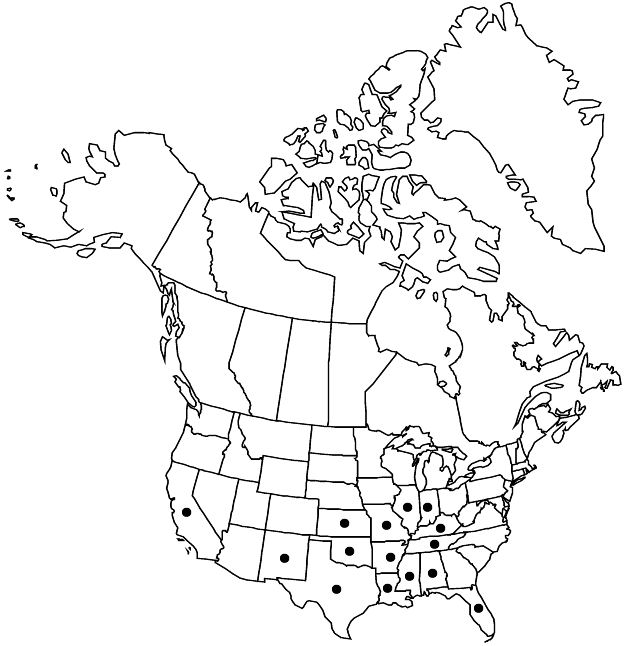Hibiscus moscheutos subsp. lasiocarpos
Novon 18: 4. 2008.
Leaf-blades lanceolate to broadly-triangular-ovate, seldom lobed, usually hairy adaxially. Involucellar bractlets 1.5–4.5 (–5) cm, usually ciliate. Petals usually white, sometimes pink, with red spot basally. Capsules hairy. 2n = 38.
Phenology: Flowering mid Jun–Aug.
Habitat: Freshwater marshes, edges of ponds and streams, roadside ditches, farm ponds
Elevation: 0–400 m
Distribution

Ala., Ark., Calif., Fla., Ill., Ind., Kans., Ky., La., Miss., Mo., N.Mex., Okla., Tenn., Tex., Mexico (Chihuahua)
Discussion
Subspecies lasiocarpos has been reported also from Utah; the relevant specimen at BRY was cultivated, grown from seeds sent from Hawaii (S. L. Welsh, pers. comm.).
Some authors have commented recently on the distinctness of subsp. lasiocarpos (O. J. Blanchard 2008; B. L. Turner 2008; S. R. Hill 2009). The first two are in agreement that H. lasiocarpos should be recognized at infraspecific rank; Hill has maintained it as a separate species and, at the same time, has recognized the California populations as H. lasiocarpos var. occidentalis.
R. L. Small (2004) used chloroplast and nuclear DNA sequences to construct a phylogeny of Hibiscus sect. Muenchhusia, which consists of H. moscheutos and the next four species of the present treatment. He found support for the distinctness of the latter four, but four other analyzed taxa (H. incanus, H. lasiocarpos, H. moscheutos, and H. palustris), all of which together comprise H. moscheutos in the broad sense used here, produced a distinct but mostly unresolved clade. This evidence favors the view that H. lasiocarpos is better treated at infraspecific rank.
S. R. Hill (2009, 2012) has made a case for maintaining the California populations as a distinct variety. The morphological and phenological features of the variety, including its often orbiculate leaves, presence of rhizomes resulting in vegetative propagation, and conspicuous beaked flower buds have in the past supported its treatment as a distinct species, H. californicus. In the context of the present treatment, this taxon would be called H. moscheutos var. occidentalis Torrey.
Selected References
None.
Lower Taxa
"/2" is not declared as a valid unit of measurement for this property.